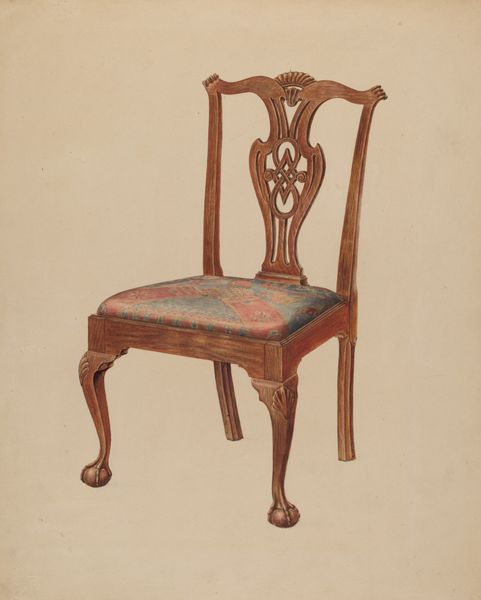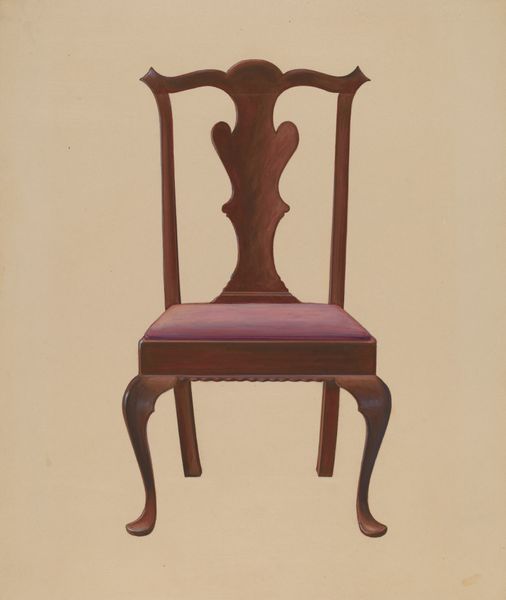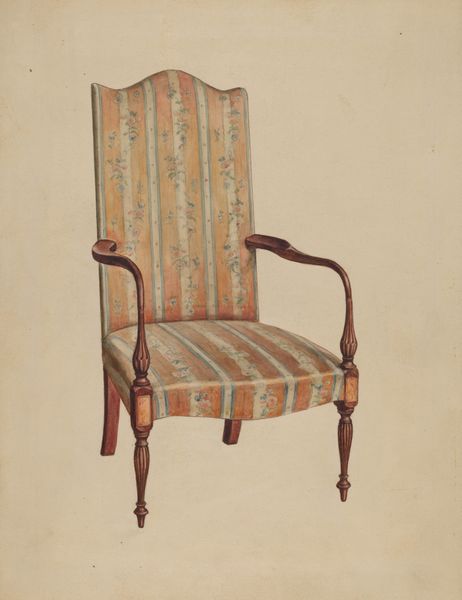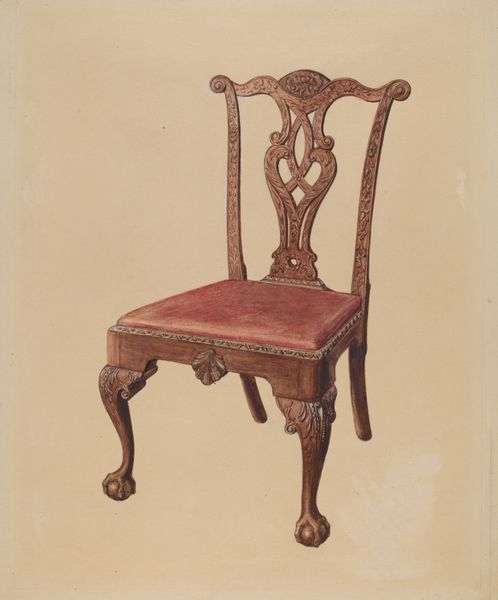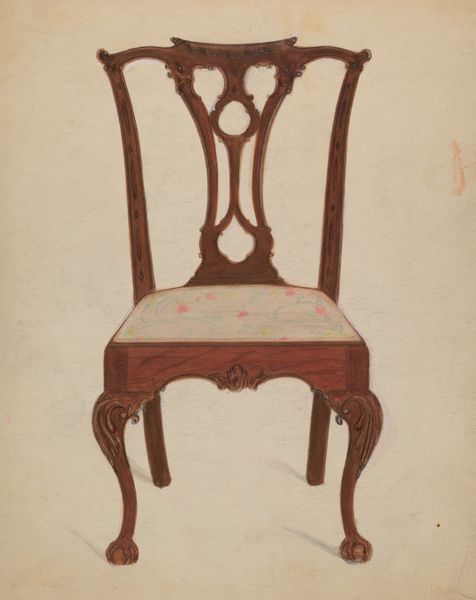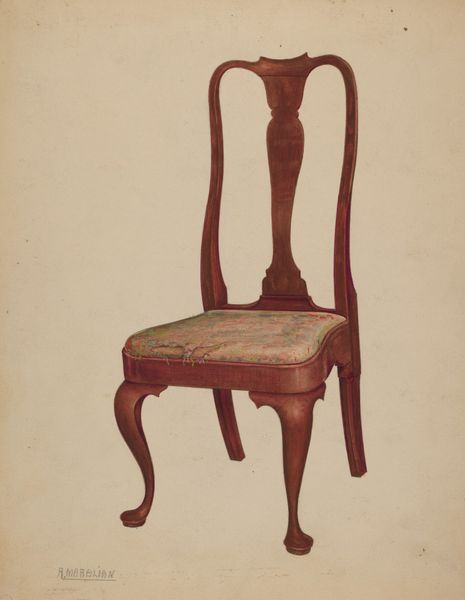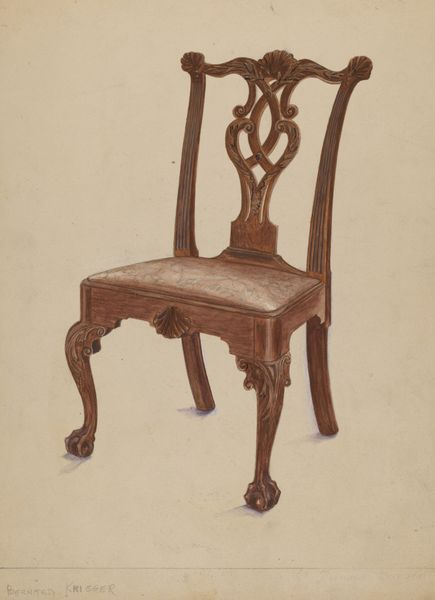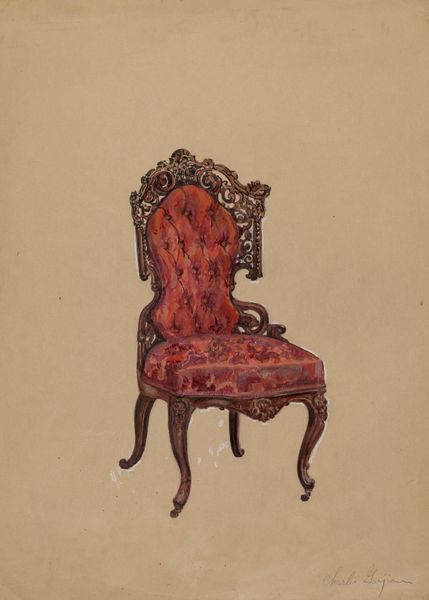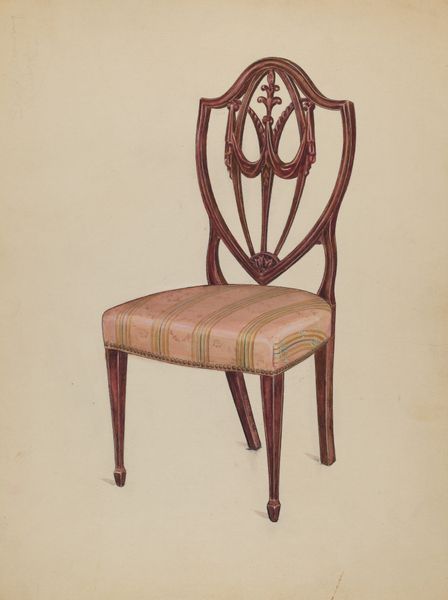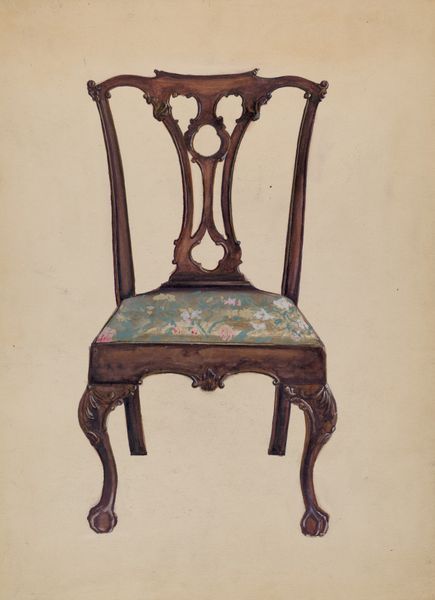
drawing, coloured-pencil
#
drawing
#
coloured-pencil
#
figuration
#
coloured pencil
#
academic-art
#
decorative-art
Dimensions: overall: 30.6 x 22.7 cm (12 1/16 x 8 15/16 in.) Original IAD Object: none given
Copyright: National Gallery of Art: CC0 1.0
Curator: Here we have Charles Goodwin's "Chair," a colored pencil drawing from 1941. It's a beautiful piece of draftsmanship, rendered with exquisite detail. What's your initial reaction? Editor: Well, the intricacy of the carving definitely jumps out. The ornamental quality speaks to a desire for visual richness, almost as if the object itself is meant to signify more than just mere functionality. Curator: Absolutely. And Goodwin’s choice of colored pencil, elevated beyond a simple sketching medium, invites questions about his artistic priorities. Was he trying to imitate the look and feel of an actual piece of furniture making or exploring drawing? The craft element is prominent here. Editor: I’d argue that it taps into deeper symbolic meanings around status and belonging. The ornate style, suggestive of say French royalism or perhaps Baroque influences, carries centuries of connotations. It invites a sort of reflection on luxury and power. Even that zigzag pattern looks quite like some sort of abstract familial crest. Curator: You're right, those connotations are hard to ignore. However, it's important to look at the economic constraints during the early 1940s. The use of color pencils suggests a way of realizing the aspirations of the upper classes with accessible materials. Editor: I still think the very specific forms carry strong echoes, but I appreciate that the choice of rendering could point to aspirations. Perhaps Goodwin is revealing a certain anxiety too. Curator: Anxiety? I would interpret this as hopeful at first sight. Yet I appreciate your point in viewing the anxiety of mimicking or being confined to an unapproachable dream life as a symbolic possibility of the object. Editor: Thank you for pointing out these questions of practicality. It is useful for understanding how art can reveal an individual within their socio-economic conditions. Curator: And thanks to you, I considered how design echoes across history can bring context, value, and, perhaps, tension to something seemingly quotidian as "Chair."
Comments
No comments
Be the first to comment and join the conversation on the ultimate creative platform.
